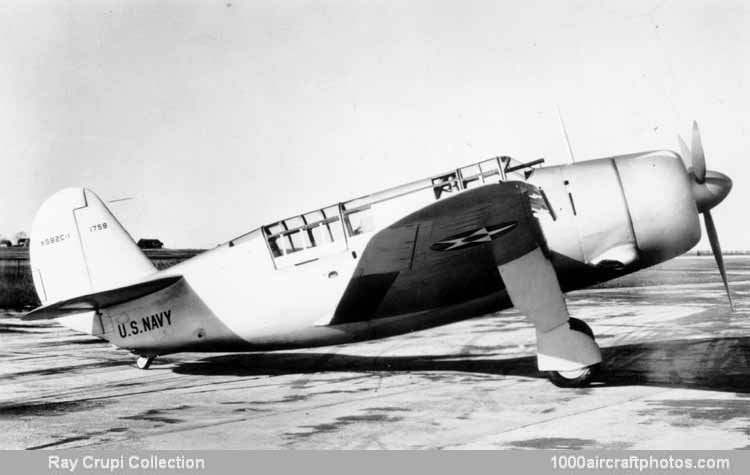01/31/2013. Remarks by Johan Visschedijk: "The XSB2C-1, BuNo. 1758, was a conventional-looking two-seat all-metal low-wing monoplane that most impartial observers considered to be unusually close-coupled for a dive-bomber, which needed good directional stability. The short length was dictated by the size of the lifts on current aircraft carriers.
The crew sat in tandem under a long canopy that faired into a collapsible rear turtle deck as on the SOCs and SBCs. To reduce storage space aboard ship, the outer wing panels folded hydraulically upward, outboard of the inward-retracting landing gear. Power plant was the new 1,700 hp Pratt & Whitney R-2800-8 Double Wasp, an eighteen-cylinder, two-row radial. Split trailing edge dive-brakes were fitted to the center section and automatic leading edge slats were fitted to the outer two-thirds of each outer wing panel.
Initial armament was a pair of 0.30 in (7.62 mm) machine guns in the nose and a pair of 0.50 in (12.7 mm) machine guns on a power-driven mount in the rear cockpit. An internal bomb bay could carry a 1,000 lb (454 kg) bomb. Displacement mechanism moved this bomb clear of the propeller arc before release during near-vertical dive bombing.
The XSB2C-1 made its first flight on 18 December, 1940. It suffered a major crash in February 1941, but was rebuilt. Never released from manufacturer's trials, the XSB2C-1 was never tested by the USN before it suffered an in-flight wing failure and was destroyed on 21 December, 1941. However, the type was already taken into production on November 29, before the first flight."
